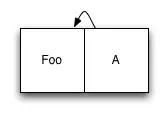(1) 统计term在整个collection中的文档频度(document frequency, DF);
(2) 统计term在整个collection中出现的词次(term frequency in whole collection);
(3) 统计term在某个文档中出现的频度(term frequency, TF);
(4) 列出term在某文档中出现的位置(position);
(5) 整个collection中文档的个数;
那么为什么要用到这些数据呢?这些数据是实现TR(Text Retrieval,文本检索)的必备的“原料”,而且是经过加工的。在检索之前,只有原始文本(raw data);经过索引器(indexer)的处理之后,原始文本变成了一个一个的term(或者token),然后被indexer纪录下来所在的位置、出现的次数。有了这些数据,应用一些模型,就可以实现搜索引擎实现的功能——文本检索。
聪明的读者您可能会说,这看起来似乎很好做,不过就是计数(count)么。不错,就是计数,或者说是统计。但是看似简单的过程,如果加上空间(内存容量)的限制,就显得不那么简单了。假设如果每篇文档有100个term,每个term需要存储10字节信息,存1,000,000篇文档需要 10x100x10^6=10^9=2^30字节,也就是1GB。虽然现在1G内存不算什么,可是总不能把1GB的数据时时刻刻都放入内存吧。那么放入硬盘好了,现在需要用数据的时候,再把1GB数据从硬盘搬到内存。OK,可以先去冲杯咖啡,回来在继续下面的操作。这是1,000,000的文档,如果更多一点呢,现在没有任何辅助数据结构的方式,会导致很差的效率。
Lucene的索引会把数据分成段,并且在需要的时候才读,不需要的时候就让数据乖乖地呆在硬盘上。Lucene本身是一个优秀的索引引擎,能够提供有效的索引和检索机制。文本的目的是,介绍如用利用Lucene的API,如何从已经建好的索引的数据中读取需要的信息。至于Lucene如何使用,我会在后续的文章中逐渐介绍。
我们一步一步来看。这里建设已经有实现建好索引,存放在index目录下。好,要读索引,总得先生成一个读索引器(即Lucene中IndexReader的实例)。好,写下面的程序(程序为C#程序,本文使用DotLucene)。
IndexReader reader;
问题出来了,IndexReader是一个abstract类,不能实例化。那好,换派生类试试看。找到IndexReader的两个孩子——SegmentReader和MultiReader。用哪个呢?无论是哪个都需要一大堆参数(我是颇费了周折才搞清楚它们的用途,后面再解释),似乎想用Lucene的索引数据不是那么容易啊。通过跟踪代码和查阅文档,我终于找到使用IndexReader的钥匙。原来IndexReader有一个“工厂模式”的static interface——IndexReader.Open。定义如下:
#0001 public static IndexReader Open(System.String path)
#0002 public static IndexReader Open(System.IO.FileInfo path)
#0003 public static IndexReader Open(Directory directory)
#0004 private static IndexReader Open(Directory directory, bool closeDirectory)
其中有三个是public的接口,可供调用。打开一个索引,就是这么简单:
#0001 IndexReader reader = IndexReader.Open(index);
实际上,这个打开索引经历了这样的一个过程:
#0001 SegmentInfos infos = new SegmentInfos();
#0002 Directory directory = FSDirectory.GetDirectory(index, false);
#0003 infos.Read(directory);
#0004 bool closeDirectory = false;
#0005 if (infos.Count == 1)
#0006 {
#0007 // index is optimized
#0008 return new SegmentReader(infos, infos.Info(0), closeDirectory);
#0009 }
#0010 else
#0011 {
#0012 IndexReader[] readers = new IndexReader[infos.Count];
#0013 for (int i = 0; i < infos.Count; i++)
#0014 readers[i] = new SegmentReader(infos.Info(i));
#0015 return new MultiReader(directory, infos, closeDirectory, readers);
#0016 }
首先要读入索引的段信息(segment information, #0001~#0003),然后看一下有几个段:如果只有一个,那么可能是优化过的,直接读取这一个段就可以(#0008);否则需要一次读入各个段(#0013~#0014),然后再拼成一个MultiReader(#0015)。打开索引文件的过程就是这样。
接下来我们要看看如何读取信息了。用下面这段代码来说明。
#0001 public static void PrintIndex(IndexReader reader)
#0002 {
#0003 //显示有多少个document
#0004 System.Console.WriteLine(reader + "tNumDocs = " + reader.NumDocs());
#0005 for (int i = 0; i < reader.NumDocs(); i++)
#0006 {
#0007 System.Console.WriteLine(reader.Document(i));
#0008 }
#0009
#0010 //枚举term,获得<document, term freq, position* >信息
#0011 TermEnum termEnum = reader.Terms();
#0012 while (termEnum.Next())
#0013 {
#0014 System.Console.Write(termEnum.Term());
#0015 System.Console.WriteLine("tDocFreq=" + termEnum.DocFreq());
#0016
#0017 TermPositions termPositions = reader.TermPositions(termEnum.Term());
#0018 int i = 0;
#0019 int j = 0;
#0020 while (termPositions.Next())
#0021 {
#0022 System.Console.WriteLine((i++) + "->" + " DocNo:" + termPositions.Doc() + ", Freq:" + termPositions.Freq());
#0023 for (j = 0; j < termPositions.Freq(); j++)
#0024 System.Console.Write("[" + termPositions.NextPosition() + "]");
#0025 System.Console.WriteLine();
#0026 }
#0027
#0028 //直接获取 <term freq, document> 的信息
#0029 TermDocs termDocs = reader.TermDocs(termEnum.Term());
#0030 while (termDocs.Next())
#0031 {
#0032 System.Console.WriteLine((i++) + "->" + " DocNo:" + termDocs.Doc() + ", Freq:" + termDocs.Freq());
#0033 }
#0034 }
#0035
#0036 // FieldInfos fieldInfos = reader.fieldInfos;
#0037 // FieldInfo pathFieldInfo = fieldInfos.FieldInfo("path");
#0038
#0039 //显示 term frequency vector
#0040 for (int i = 0; i < reader.NumDocs(); i++)
#0041 {
#0042 //对contents的token之后的term存于了TermFreqVector
#0043 TermFreqVector termFreqVector = reader.GetTermFreqVector(i, "contents");
#0044
#0045 if (termFreqVector == null)
#0046 {
#0047 System.Console.WriteLine("termFreqVector is null.");
#0048 continue;
#0049 }
#0050
#0051 String fieldName = termFreqVector.GetField();
#0052 String[] terms = termFreqVector.GetTerms();
#0053 int[] frequences = termFreqVector.GetTermFrequencies();
#0054
#0055 System.Console.Write("FieldName:" + fieldName);
#0056 for (int j = 0; j < terms.Length; j++)
#0057 {
#0058 System.Console.Write("[" + terms[j] + ":" + frequences[j] + "]");
#0059 }

#0060 System.Console.WriteLine();
#0061 }
#0062 System.Console.WriteLine();
#0063 }
#0004 计算document的个数
#0012~#0034 枚举collection中所有的term
其中#0017~#0026 枚举每个term在出现的document中的所有位置(第几个词,从1开始计数);#0029~#0033 计算每个term出现在哪些文档和相应的出现频度(即DF和TF)。
#0036~#0037在reader是SegmentReader类型的情况下有效。
#0040~#0061可以快速的读取某篇文档中出现的term和相应的频度。但是这部分需要在建索引时,设置storeTermVector为true。比如
doc.Add(Field.Text("contents", reader, true));
其中的第三项即是。默认为false。
有了这些数据,就可以统计我需要的数据了。以后我会介绍如何建立索引,如何应用Lucene。
from:http://lqgao.spaces.live.com/?_c11_BlogPart_BlogPart=blogview&_c=BlogPart&partqs=cat%3dInside%2520Lucene
http://hi.baidu.com/lewutian推荐文章:
1. Lucene(Nutch)距离商业文本搜索引擎还有多远?
2. Lucene学习笔记 - 5
3. lucene.net 高级应用之排序、设置权重、优化、分布式搜索
4. lucene 的简单实现 数据库索引 demo by Alan
5. beta技术沙龙:大型网站的Lucene应用
6. Lucene中文分词 “庖丁解牛”使用指南
7. Lucene应用-实现多重标准搜索
8. Lucene.Net Research
9. lucene学习3——词条字典[Term Dictionary]文件(.tis和.tii)与词条频率文件(.frq)、词条位置文件(.prx)
10. Lucene Payload 的研究与应用
11. Lucene多字段搜索
12. lucene缺点汇总
13. 一个实例包含lucene所有检索核心用法(多域检索、多索引检索)
14. Lucene 高亮显示搜索结果 C#代码
15. lucene 建立索引和简单搜索
 爱华网
爱华网


